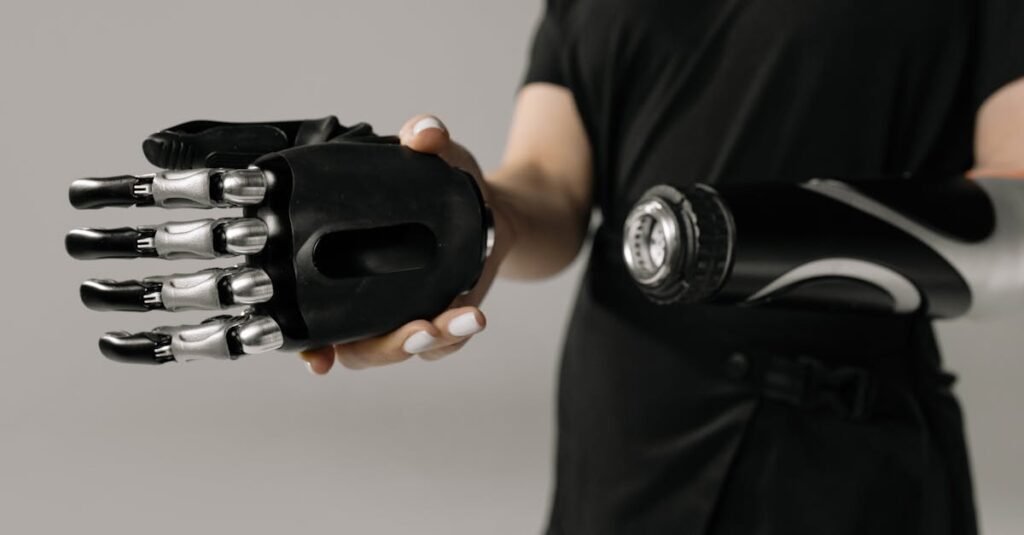Introduction to 3D Printing in Healthcare
3D printing, also known as additive manufacturing, has emerged as a groundbreaking technology in various fields, particularly in healthcare. This innovative approach allows for the creation of complex structures layer by layer, using a diverse range of materials. The primary methods used in 3D printing include Fused Deposition Modeling (FDM), Stereolithography (SLA), and Selective Laser Sintering (SLS). Each technology possesses its unique advantages, making it suitable for different applications within the medical sector.
FDM, for instance, is widely employed due to its accessibility and cost-effectiveness, utilizing thermoplastic filaments to construct models. SLA, on the other hand, is favored for producing highly accurate and detailed prototypes, using a light-sensitive resin that hardens when exposed to a specific wavelength of light. SLS offers another powerful option, whereby powdered materials are fused together using a laser, enabling the creation of durable structures. These techniques pave the way for a plethora of medical applications, from creating custom prosthetics to bioprinting tissues and organs.
The potential applications of 3D printing in healthcare are vast and constantly evolving. This technology facilitates the customization of medical devices, providing patients with tailor-made solutions that improve comfort, fit, and functionality. In prosthetics, for example, the ability to design and manufacture personalized limbs results in enhanced user satisfaction and mobility. Furthermore, 3D printing holds promise for organ transplants where personalized scaffolds can potentially match patient-specific anatomical requirements. As healthcare increasingly emphasizes the importance of innovation, 3D printing stands at the forefront, leading the charge towards more personalized and effective treatment solutions. The transformative potential of this technology in healthcare settings cannot be overstated, as it continues to revolutionize how medical professionals approach patient care.
Revolutionizing Prosthetics with 3D Printing
The advent of 3D printing technology has significantly transformed the field of prosthetics, introducing innovative solutions that address various limitations associated with traditional prosthetic manufacturing. One of the most notable advantages of 3D-printed prosthetics is their cost-effectiveness. Compared to conventional methods, which often involve expensive materials and labor-intensive processes, 3D printing allows for the rapid production of prosthetic devices using affordable materials, making them accessible to a broader range of patients.
Customization also stands out as a major benefit of 3D printing in the realm of prosthetics. Each individual’s physical requirements and preferences are unique, and 3D printing allows for the creation of bespoke solutions tailored specifically to the patient. This level of customization not only enhances the aesthetic appeal of the prosthetic device but also significantly improves comfort and functionality. Patients can benefit from a product that fits more precisely, reducing friction and irritation that often occur with standard prosthetics.
Several case studies exemplify the transformative impact of 3D printing on prosthetics. For instance, a young boy in need of a prosthetic arm received a customized 3D-printed device that not only matched the specifications of his residual limb but also showcased his favorite superhero’s design. Such personalization affects a patient’s willingness to use the prosthetic, ultimately leading to better rehabilitation outcomes.
Moreover, the weight reduction in 3D-printed prosthetics enhances users’ mobility, an essential factor for individuals adapting to new artificial limbs. Patients have reported increased ease of movement and a renewed sense of self-confidence when equipped with these advanced devices. This paradigm shift in prosthetic design and production underscores the potential of 3D printing technology to revolutionize healthcare, particularly in providing comprehensive, patient-centered solutions that meet the diverse needs of individuals utilizing prosthetics.
The Role of 3D Printing in Organ Transplants
3D printing technology has emerged as a transformative force in the field of organ transplants. By leveraging bioprinting techniques, researchers can create intricate tissue structures that closely mimic the natural features of human organs. This capability is particularly significant considering the shortage of donor organs, as 3D-printed organs could potentially alleviate this critical issue, providing a viable alternative for transplantation that matches patient-specific requirements.
One of the primary applications of 3D printing in organ transplants is the development of patient-specific anatomical models. Surgeons can utilize these accurate representations during pre-operative planning, allowing for enhanced precision in surgical procedures. These models can simulate the organ’s exact dimensions and pathology, greatly improving the overall surgical approach and aiding in the anticipation of potential complications. Consequently, this advancement not only boosts the surgeon’s confidence but also significantly enhances patient outcomes.
While the prospect of creating fully-functional organs through 3D printing carries immense promise, it is crucial to address the ethical considerations surrounding this technology. Issues such as the source of bio-inks, potential commercialization of human tissues, and the implications of modifying natural biological processes necessitate ongoing dialogue among scientists, ethicists, and regulatory bodies. Furthermore, challenges such as the complexity of vascularization within printed organs and long-term functionality remain pivotal obstacles that researchers are diligently working to overcome.
As the field of 3D printing in organ transplants advances, future research directions will likely focus on improving bioprinting technologies, enhancing the biocompatibility of materials, and developing governance frameworks to ensure ethical compliance. By addressing these challenges, the integration of 3D printing can revolutionize organ transplants, paving the way for a new era in regenerative medicine.
Challenges and Future Outlook of 3D Printing in Healthcare
The integration of 3D printing technology into the healthcare sector stands on the cusp of a significant transformation. However, several challenges must be addressed to realize its full potential. One of the primary barriers includes regulatory issues, as the healthcare sector operates under stringent regulations that govern medical devices and materials. The U.S. Food and Drug Administration (FDA) and similar agencies worldwide have yet to establish comprehensive guidelines specific to 3D printed medical products. This uncertainty may deter the adoption of 3D printing technologies, as manufacturers are hesitant to invest without clear regulatory pathways.
Furthermore, material limitations pose another significant challenge. While advancements in 3D printing materials have been made, the development of biocompatible and durable substances suitable for long-term implants remains a priority. Current materials may not always meet the performance criteria necessary for critical applications like prosthetics or organ transplants. This limitation emphasizes the necessity for substantial research and development in the field of materials science to enhance the quality and reliability of 3D printed products in healthcare.
Looking to the future, potential legislative changes may streamline the process for 3D printing innovations to enter the healthcare arena. A more adaptive regulatory framework could encourage investment and exploration of new applications in patient care. Additionally, the integration of artificial intelligence (AI) and machine learning into the design and manufacturing processes of 3D printing holds considerable promise. These technologies may improve the customization of prosthetics, decrease production times, and enhance precision, resulting in better outcomes for patients.
Overall, the continuous advances in 3D printing technology and the anticipated changes in regulations and materials indicate a bright future for this innovative approach in healthcare. These developments are expected to significantly improve patient care and may reshape the healthcare industry by providing tailored solutions to meet individual patient needs.
Enable initiative bringing 3D printed prosthetics.
To read more innovation articles click here.

